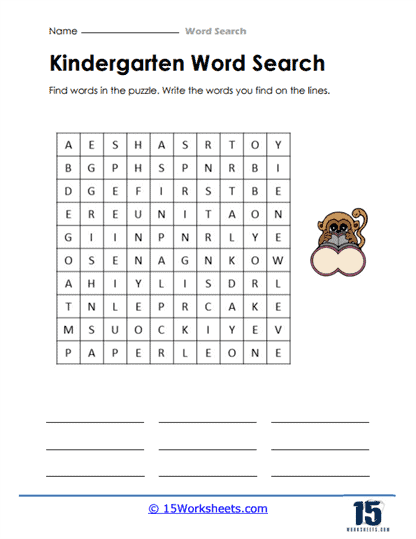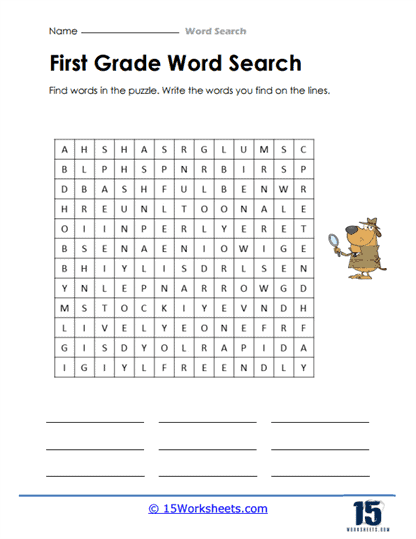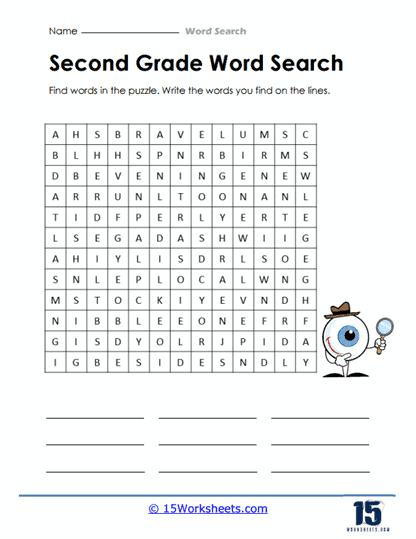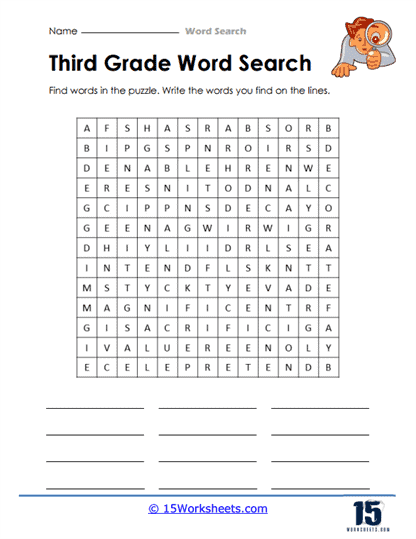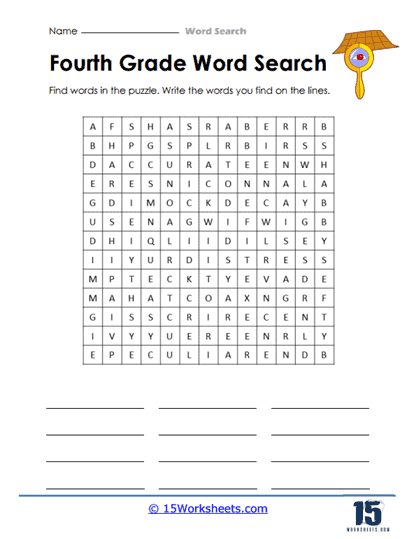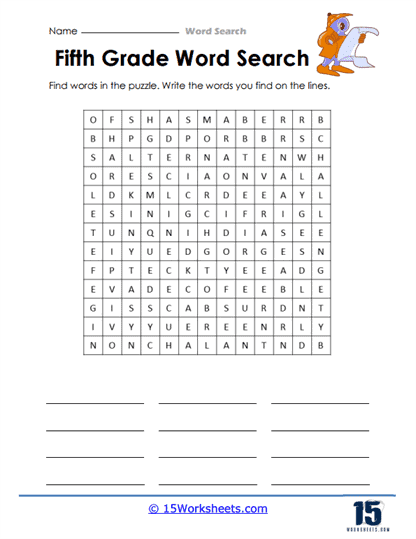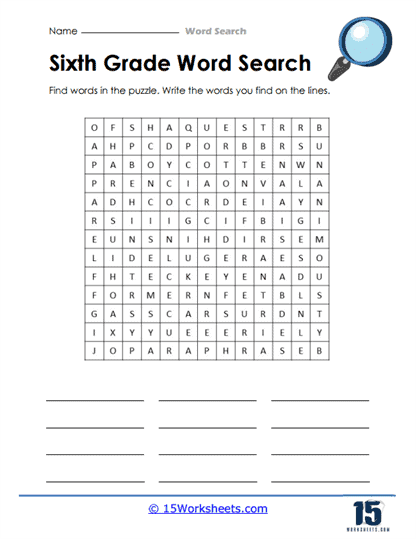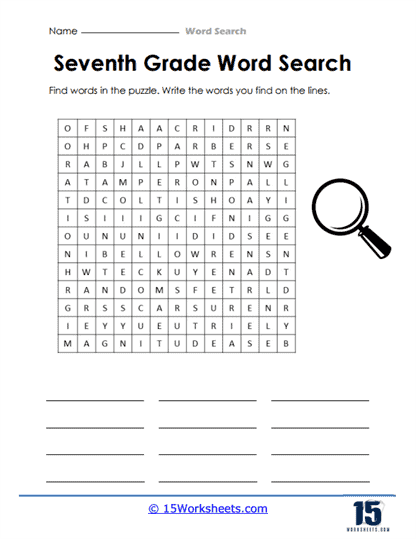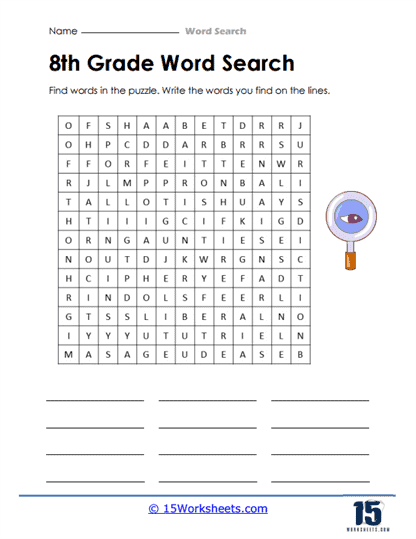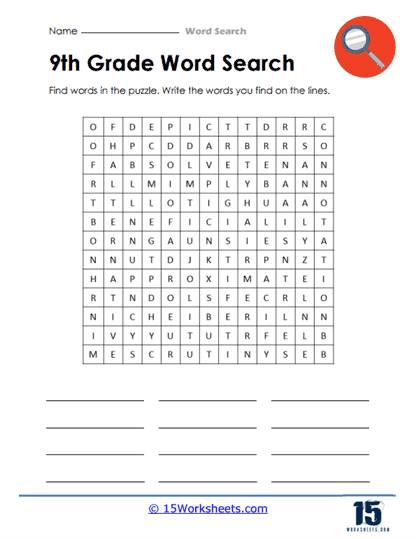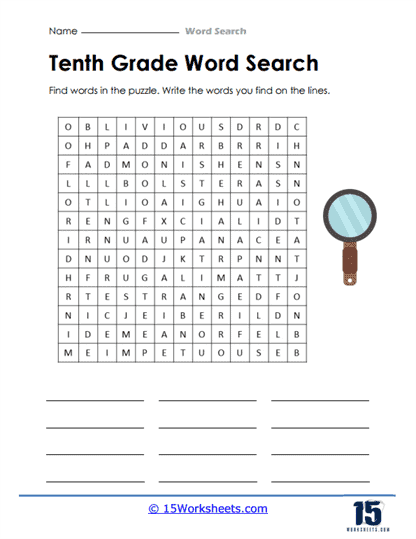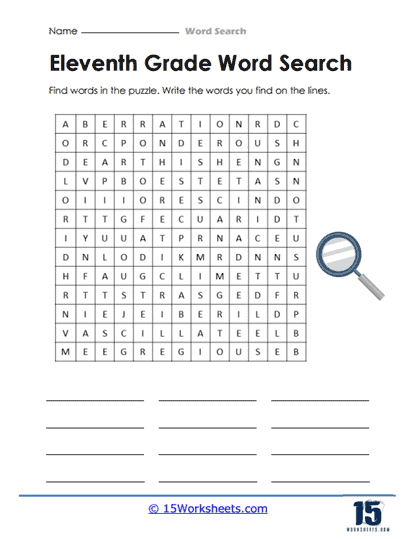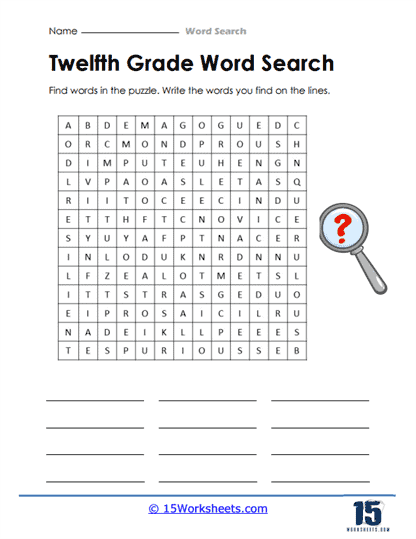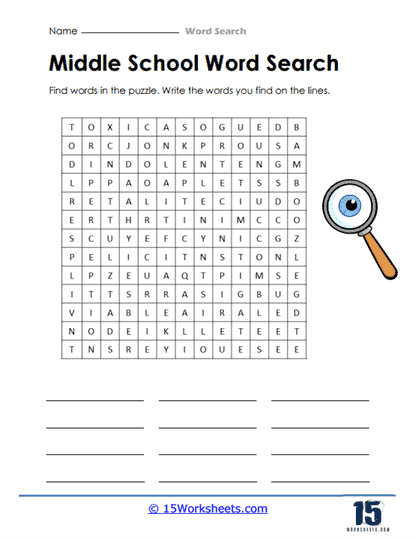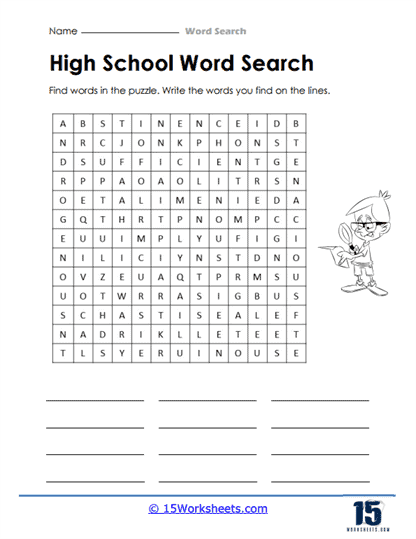Word Searches Worksheets
All About These 15 Worksheets
Students embark on an exciting journey of vocabulary discovery with this series of 15 worksheets, which is a collection of engaging word search worksheets suitable for students across all grade levels, from Kindergarten to Senior High. Each worksheet in this comprehensive series features a captivating word search puzzle that challenges students to locate and identify words within a grid, reinforcing their word recognition skills and expanding their vocabulary in an enjoyable and interactive way. We also recommend Word Search Hero for a much deeper selection of word searches for all types of topics.
This series offers a wide variety of word search puzzles, ensuring that students of all ages and language proficiency levels can find suitable challenges. The worksheets encompass a range of difficulty levels, accommodating students at various stages of their language development. Kindergarten and early elementary worksheets feature shorter words with simpler spelling patterns, while Senior High worksheets incorporate longer words and more complex vocabulary, challenging older students to deepen their language skills.
Overall, this series of word search worksheets offers educators an engaging tool to enhance students’ vocabulary acquisition and word recognition skills. These puzzles provide an interactive and entertaining way for students of all ages to expand their vocabulary, reinforce their reading abilities, and cultivate a love for language exploration.
What are Word Searches?
A Word Search is a type of word puzzle where a grid of letters contains a list of hidden words. These words can be arranged horizontally, vertically, diagonally, or even in a reverse direction. The words are usually related to a specific theme, such as animals, sports, or historical events, which helps to provide context and focus for the activity. To solve the puzzle, the player must find and circle or highlight all the words from the provided list.
What are the Benefits of Word Searches for Learning?
Vocabulary development – As students work on Word Searches, they are exposed to new words and concepts related to the theme of the puzzle. This exposure helps to expand their vocabulary and reinforce their knowledge of the subject matter.
Spelling practice – Solving Word Searches requires students to recognize the correct spelling of words as they search for them in the grid. This repeated exposure to correct spelling reinforces their spelling skills and helps to solidify their knowledge of word forms.
Pattern recognition – To locate words within the grid, students need to identify patterns formed by the arrangement of letters. This process helps to develop their pattern recognition skills, which are important for various cognitive tasks and problem-solving activities.
Visual and spatial skills – Word Searches require students to scan the grid of letters and follow the direction of the words, which improves their visual tracking and spatial awareness skills. These skills are essential for reading and various other daily activities.
Concentration and focus – Solving Word Searches demands a certain level of concentration and focus, as students must maintain their attention on the task while filtering out irrelevant information. This practice helps to improve their overall focus and attention skills, which are crucial for learning and academic success.
Engagement and fun – Word Searches are an enjoyable and game-like activity that can make learning entertaining and engaging for students. This can lead to better retention of the material and a more positive attitude towards learning.
Adaptability – Word Searches can be tailored to different age groups, skill levels, and subjects, making them versatile and suitable for various educational settings. Teachers can create customized Word Searches based on their curriculum or use pre-made puzzles to supplement their lessons.
Word Searches are a fun and engaging tool for language learning that offer several benefits to students. They help improve vocabulary, spelling, pattern recognition, visual and spatial skills, concentration, and focus while maintaining students’ interest in learning. By incorporating Word Searches into the educational process, teachers can create a more enjoyable and effective learning environment for their students.
Tips For Solving Word Search Worksheets
Scan For Unique or Rare Letters – Look for words in the list that contain unique or rare letters, such as Q, X, or Z. These letters will be easier to spot in the grid, and finding them can help you identify the location of the word.
Check for Double Letters – Words with double letters (e.g., “letter” or “apple”) can be easier to find, as the repeated letters often stand out in the grid. Focus on these words first.
Work Off of Vowels – Vowels (A, E, I, O, and U) play a crucial role in solving word search puzzles, as they are essential components of most words. By focusing on vowels, you can often identify word patterns more quickly. Here are some tips for using vowels to solve word search puzzles:
Look for Word Beginnings and Endings – Scan the grid for common word beginnings and endings, such as “ing,” “ed,” “tion,” or “pre.” Once you spot a potential match, follow the letters to see if they form one of the words on the list.
Search Methodically – Instead of randomly scanning the grid, try searching methodically. You can do this by focusing on one row, column, or diagonal line at a time, moving in a consistent direction (e.g., left to right, top to bottom). This can help ensure you don’t overlook any words.
Circle or Highlight Found Words – Once you find a word, circle or highlight it in the grid to make it easier to see which words you’ve already found. This can also help prevent you from accidentally finding the same word multiple times.

